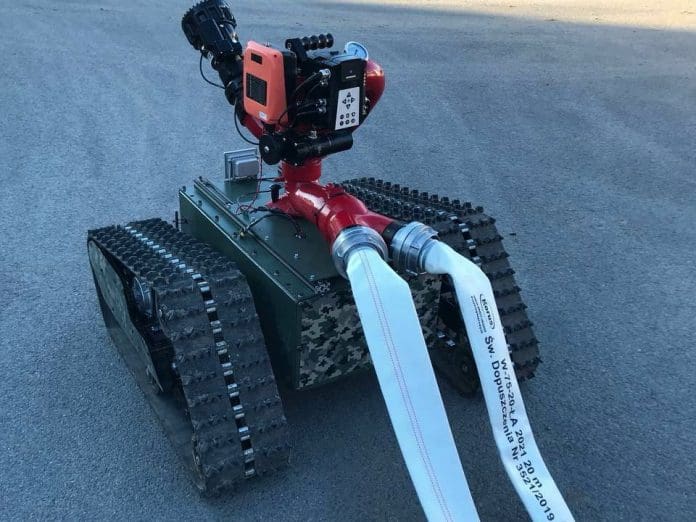
This post is also available in:
 עברית (Hebrew)
עברית (Hebrew)
Originally created for civilian first responders, a firefighting robot has recently been authorized by Ukraine’s Ministry of Defense for deployment on the battlefield. This advanced robot, based on a crawler platform and enhanced with military-grade improvements, is designed to extinguish fires using water or foam. It operates remotely, allowing the operator to remain safely away from the danger. Equipped with a video camera, the robot provides live footage of the fire scene, and it can be controlled from a distance of up to 2 kilometers in open areas and up to 400 meters in more confined spaces.
Although it was initially developed for civilian purposes, the Ministry’s statement underscores the robot’s valuable potential in military contexts. It can be particularly useful in scenarios involving the risk of detonating unexploded ammunition, dealing with burning equipment, or other dangerous situations that pose a significant risk to personnel. To meet the rigorous demands of military operations, the robot has undergone several critical enhancements. These include a reinforced undercarriage to withstand tougher conditions, an extended control range to increase operational flexibility, and improved battery life to ensure reliability in high-risk environments.
The Ministry highlighted the robot’s capabilities, noting that its tracked chassis allows it to traverse difficult terrain, move burning debris, and operate effectively in extreme temperatures. The robot is also equipped to create a “water wall” with its water cannon, a feature that enhances its ability to control and suppress large fires. However, further details about the robot’s hardware specifications, control systems, and the manufacturer of the equipment have not been disclosed. This secrecy may be due to operational security and strategic considerations.

























